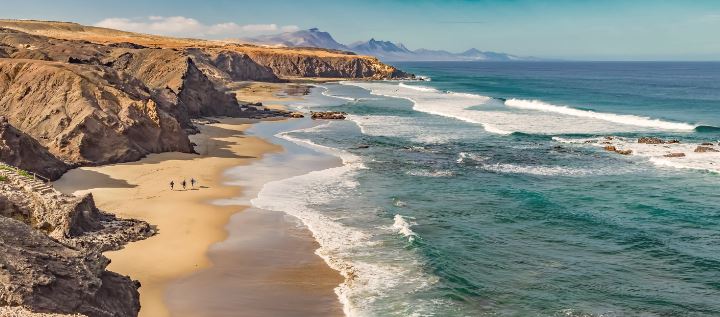Fuerteventura

Fuerteventura (pronounced [ˌfweɾteβenˈtuɾa]) is one of the Canary Islands, in the Atlantic Ocean and is part of the North Africa region, politically part of Spain. At 1,660 square kilometres (640 sq mi),[3] it is the second largest of the Canary Islands, after Tenerife.[4] As at the start of 2019, Fuerteventura had 116,886 inhabitants, the least populated of the Province of Las Palmas.[2] It was declared a biosphere reserve by UNESCO in May 2009. Its capital is Puerto del Rosario.
The island’s name is a compound word formed by the Spanish words for “strong” (fuerte) and “fortune” (ventura). Traditionally, Fuerteventura’s name has been regarded as a reference to the strong winds around the island and the resulting danger to nautical adventurers. However, it might have referred instead (or also) to wealth, luck or destiny.
In 1339 the Mallorcan navigator Angelino Dulcert, in the Planisferio de Angelino Dulcert, referred to the island as “Forte Ventura”.
Another theory is that the island’s name derives from “Fortunatae Insulae” (Fortunate Islands), the name by which the Romans knew the Canary Islands.
The indigenous name of the island, before its conquest in the 15th century, was Erbania, divided into two regions (Jandía and Maxorata), from which the name majorero (originally majo or maxo) derives. However, it has been suggested that, at some point, Maxorata (which meant “the children of the country”) was the aboriginal toponym of the entire island

